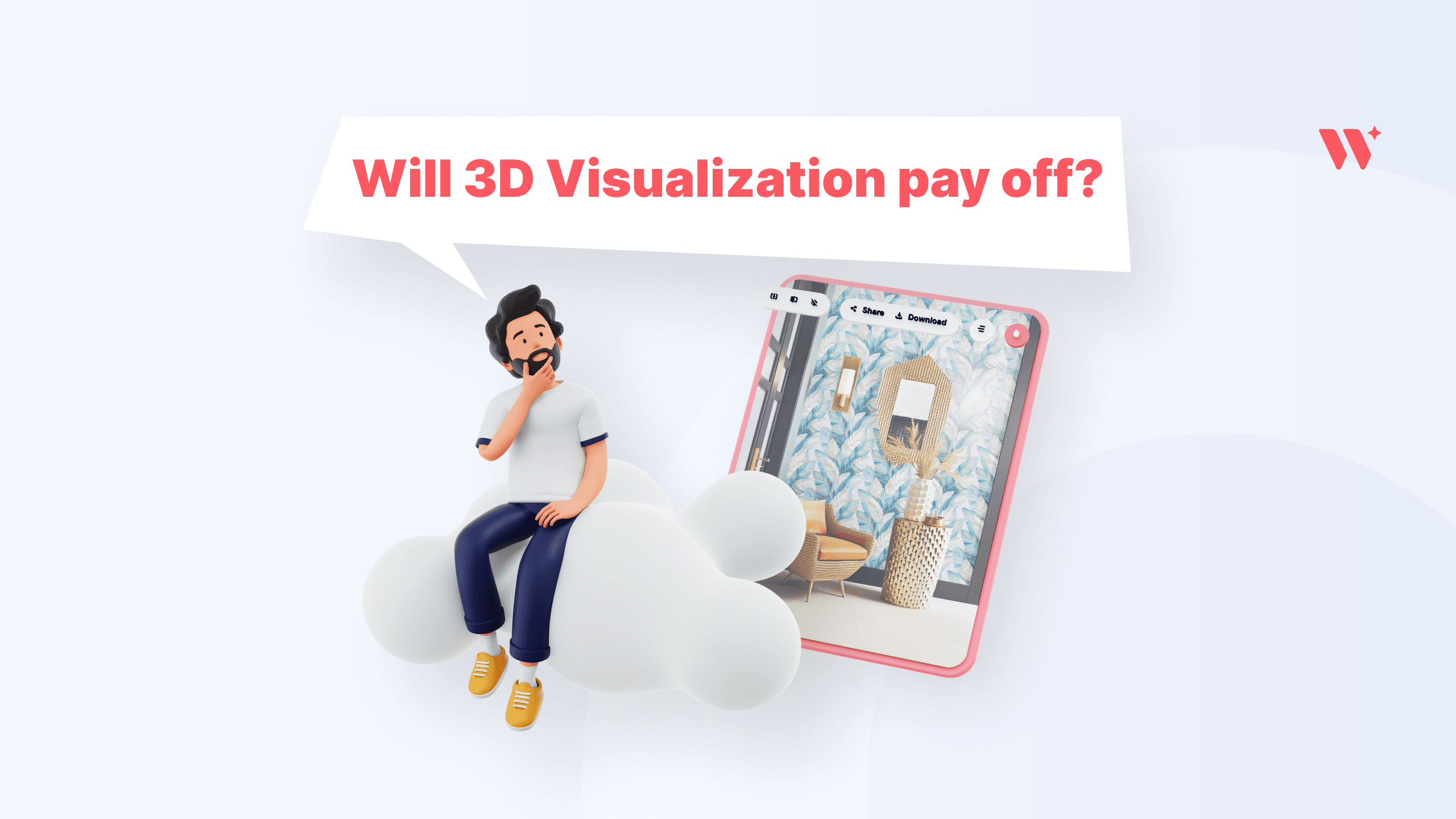How Can Businesses Measure the ROI
of Implementing 3D Visualization in Their
E-commerce Strategy?

3D visualization is becoming an integral part of modern e-commerce strategies. It helps customers make better-informed decisions by allowing them to see how products will look and fit into real-world settings. For retailers, it's more than just a visual upgrade – it's a way to drive measurable improvements in performance.
But how do you know if it’s working? To assess return on investment (ROI), businesses need to monitor a set of clear performance indicators that reflect both customer behavior and business efficiency.
Below is a breakdown of how to measure ROI and build a strong e-commerce sales strategy with the help of 3D visualization tools.

Conversion Rate Increase: How to Improve Sales in E-commerce
One of the most direct ways to measure ROI is to look at your conversion rate – the percentage of website visitors who complete a purchase. Interactive 3D visuals increase customer confidence by showing exactly how a product might look in their space, helping reduce hesitation.
For businesses looking for how to increase e-commerce sales, tracking conversion rate is essential. A steady rise in this metric signals that your investment is helping to increase e-commerce sales by giving buyers the information they need to make decisions faster and with greater confidence.
Return Rate Reduction: How to Increase Sales on an E-commerce Website
Product returns are expensive – financially and operationally. They often stem from mismatched expectations. 3D visualization solves this by offering customers realistic previews of the product, including size, material, and texture in context.
If you’re searching for how to increase sales on e-commerce website while reducing operational waste, reducing product return rates is one of the clearest routes. The more accurately shoppers understand the product, the fewer returns you get – and the better your margins become.
User Engagement: How to Boost E-commerce Sales Through Better Experiences
The longer users stay on your site and interact with your content, the more likely they are to convert. With 3D visualization, customers tend to explore products in more depth, zoom in, rotate, or even visualize them within their own rooms.

Average Order Value (AOV) and Cart Size: Improve E-commerce Sales with Visual Tools
Another measurable benefit of 3D visualization is an increase in average order value. When customers can visualize product combinations and understand product quality better, they’re more likely to buy add-ons or choose premium options.
This is one of the often-overlooked ways to boost e-commerce sales – by increasing what each customer buys. Higher cart size and AOV indicate that you're not only attracting the right shoppers but also guiding them toward more valuable purchases.
Customer Satisfaction and Loyalty: How to Improve Sales in E-commerce Through Trust
A confident customer is a happy customer. When people feel secure in what they’re buying, they’re more likely to return and recommend your store to others. 3D visualization reduces doubts and enhances transparency, which in turn drives satisfaction.
Customer retention is a crucial part of any long-term plan to improve e-commerce sales. Post-purchase surveys and repeat order data can help you understand how visualization impacts customer trust – and how that trust contributes to loyalty and lifetime value.
Cost Savings and Operational Efficiency: Boosting ROI Beyond Sales
The benefits of 3D visualization extend beyond the sales funnel. Creating traditional product imagery can be expensive and time-consuming, especially when dealing with multiple product variations. 3D rendering tools allow for scalable asset creation that can be reused across your website, social media, marketplaces, and printed catalogs.
This also plays a role in how to improve sales in e-commerce – by reducing operational costs and shortening time-to-market for new product visuals. Lower support volume, faster product launches, and reusable content all contribute to a healthier bottom line.
Tools to Track ROI: How to Boost E-commerce Sales with Data
The only way to measure ROI accurately is to use the right tools. Here are some recommendations:
- Google Analytics / GA4 – to track behavior changes over time;
- E-commerce platforms (Shopify, WooCommerce, Magento) – for monitoring sales and returns;
- Heatmaps & session recording tools (Hotjar, Clarity) – to analyze interactions with 3D content;
- CRM tools & survey platforms – to gather customer feedback and satisfaction metrics;
- BI dashboards (Power BI, Looker) – to correlate KPIs and forecast trends.
The insights gained from these tools help businesses focus on how to increase e-commerce sales methodically, using data rather than assumptions.
Strategic Takeaway: E-commerce Sales Strategy Built on Visualization
3D visualization is not just a cosmetic upgrade – it's a business tool that influences everything from conversion and return rates to customer satisfaction and operational costs. The key to measuring its ROI lies in choosing the right metrics, tracking them consistently, and making data-driven decisions.
Visual technology fits naturally into a long-term e-commerce sales strategy, helping businesses build trust, reduce friction in the buying process, and ultimately grow revenue. For companies exploring how to improve sales in e-commerce or looking for scalable ways to boost e-commerce sales, 3D visualization offers a practical, results-driven approach.
For those looking to explore practical tools in this area, you can learn more about Wizart Visualizer – a solution designed to help e-commerce stores present their products in realistic, interactive formats that drive performance.
